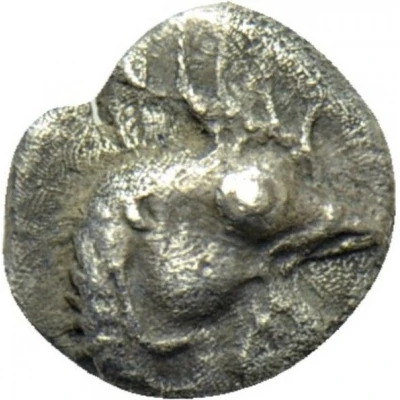


© Classical Numismatic Group, Inc.
Hemiobol 521 BC - 478 BC
| Silver | 0.43 g | 8.0 mm |
| Issuer | Phokaia (Ionia) |
|---|---|
| Type | Standard circulation coin |
| Years | 521 BC - 478 BC |
| Value | ½ Obol (1⁄12) |
| Currency | Drachm |
| Composition | Silver |
| Weight | 0.43 g |
| Diameter | 8.0 mm |
| Shape | Round (irregular) |
| Technique | Hammered, Incuse |
| Demonetized | Yes |
| Updated | 2024-10-09 |
| Numista | N#148063 |
|---|---|
| Rarity index | 100% |
Reverse
Quadripartite incuse square with X in each quarter
Comment
Unpublished as a hemiobol, cf. SNG Kayhan 514-6 (hemidrachm); cf. SNG von Aulock 2116 (hemidrachm) and 2118 (trihemiobol); cf. SNG Copenhagen 350 (hemidrachm).
Interesting fact
The Hemiobol coin was used as a form of currency in ancient Greece, specifically in the city of Phokaia (Ionia) during the 6th century BC. The coin features an image of a seated goddess on one side and a quadripartite incuse on the other. Despite its small size, the Hemiobol was an important coin in ancient Greece, as it was used to buy everyday items like bread and wine.



